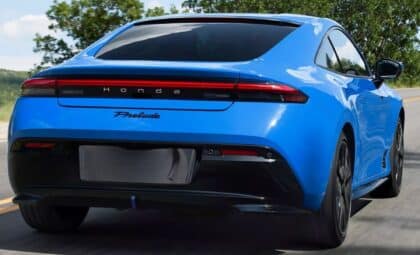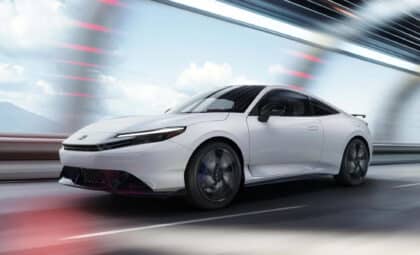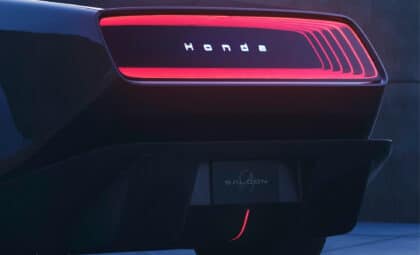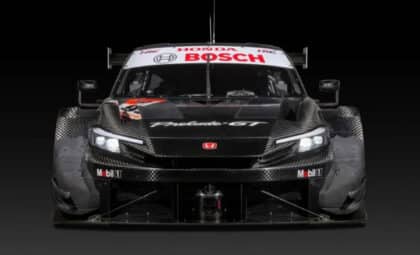With improvements in tech, comfort, and exterior design, the latest Honda Pilot model aims to enhance the driving experience, but some of its most glaring weaknesses, including the absence of a hybrid powertrain, remain. As Honda pushes the Pilot into a new era, the vehicle’s evolution highlights both its strengths and its missed opportunities.
Honda has long been a go-to for families looking for reliable, well-equipped SUVs, and the Pilot is no exception. But with competitors continuously pushing the envelope in terms of technology and efficiency, the 2026 model needed to offer significant updates. Thankfully, it doesn’t disappoint—except in one major area. While the exterior and interior features get a substantial refresh, the lack of a hybrid engine could hold the Pilot back as consumers shift towards more sustainable driving options.
Tech Upgrades to Compete with Rivals
Honda knows that staying competitive in today’s market means providing cutting-edge technology. The 2026 Honda Pilot doesn’t shy away from this reality, with an impressive update to its infotainment system.
According to MotorTrend, all models now come with a standard 12.3-inch touchscreen, a significant leap from the previous 7.0- and 9.0-inch options. This upgrade is complemented by the addition of wireless Apple CarPlay and Android Auto, as well as 5G Wi-Fi capability for seamless connectivity. Additionally, a new digital 10.2-inch instrument cluster replaces the traditional analog gauges, giving the dashboard a modern feel.
The new system features a more user-friendly interface, with fewer menus and the ability to pin favorite functions directly to the screen, making navigation and access to key features more intuitive. This level of tech sophistication positions the Pilot as a serious contender in the midsize SUV market, where rivals like the Toyota Highlander and Ford Explorer have also raised the bar in terms of infotainment and connectivity.

A Quieter and More Comfortable Ride
One of the most praised updates for the 2026 Pilot is its improved cabin comfort. Noise has long been a sore spot for Honda, but the company has addressed this issue head-on. The addition of semi-tempered door glass, more insulation in the doors and hood, and revised fender liners on the Touring and Elite trims will significantly reduce road and wind noise, making the cabin much quieter. This improvement is crucial for families who spend long hours on the road, offering a more pleasant experience for both drivers and passengers.
As noted by Supercar Blondie, Honda’s efforts to reduce outside noise by up to three decibels have transformed the long-haul journey experience, making it feel more relaxed and less fatiguing. This, combined with the upgraded tech features, creates a more refined driving environment that will appeal to those looking for an SUV that is both functional and comfortable.
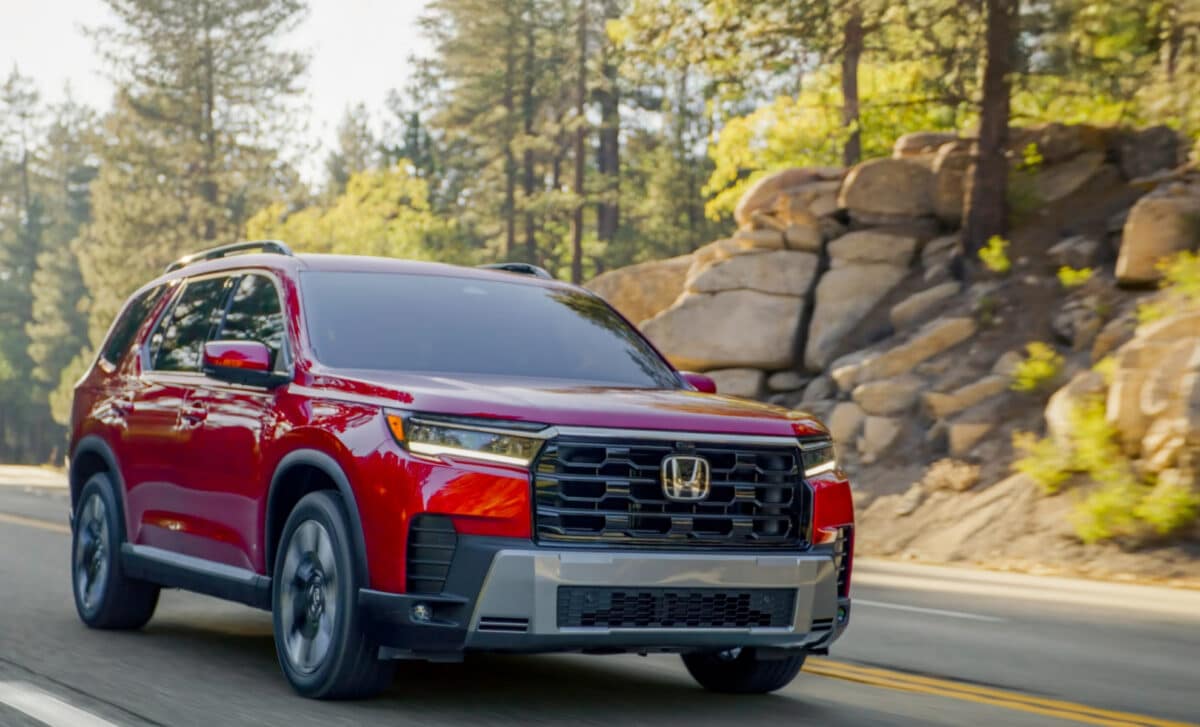
A More Rugged, Practical Exterior
On the outside, the 2026 Honda Pilot gets a bold refresh with more rugged styling cues. The most noticeable change is the front grille, which has been redesigned to be squarer and more aggressive, signaling the Pilot’s tougher character.
Roof racks have been added as standard across all trims, from the base EX-L to the more premium Elite model. These additions not only improve the Pilot’s practicality for outdoor adventures but also bring the model more in line with Honda’s Passport, which shares a similar off-road-focused appeal.
For those seeking even more ruggedness, the TrailSport model continues to offer distinctive off-road styling, such as unique paint options like Ash Green Metallic and brown leather seats with orange stitching. These updates, while subtle, enhance the Pilot’s aesthetic appeal while also boosting its functionality for active families. The Pilot’s updated exterior design and the inclusion of roof rails and a power liftgate on all trims increase its versatility, allowing for more cargo space and easier access.
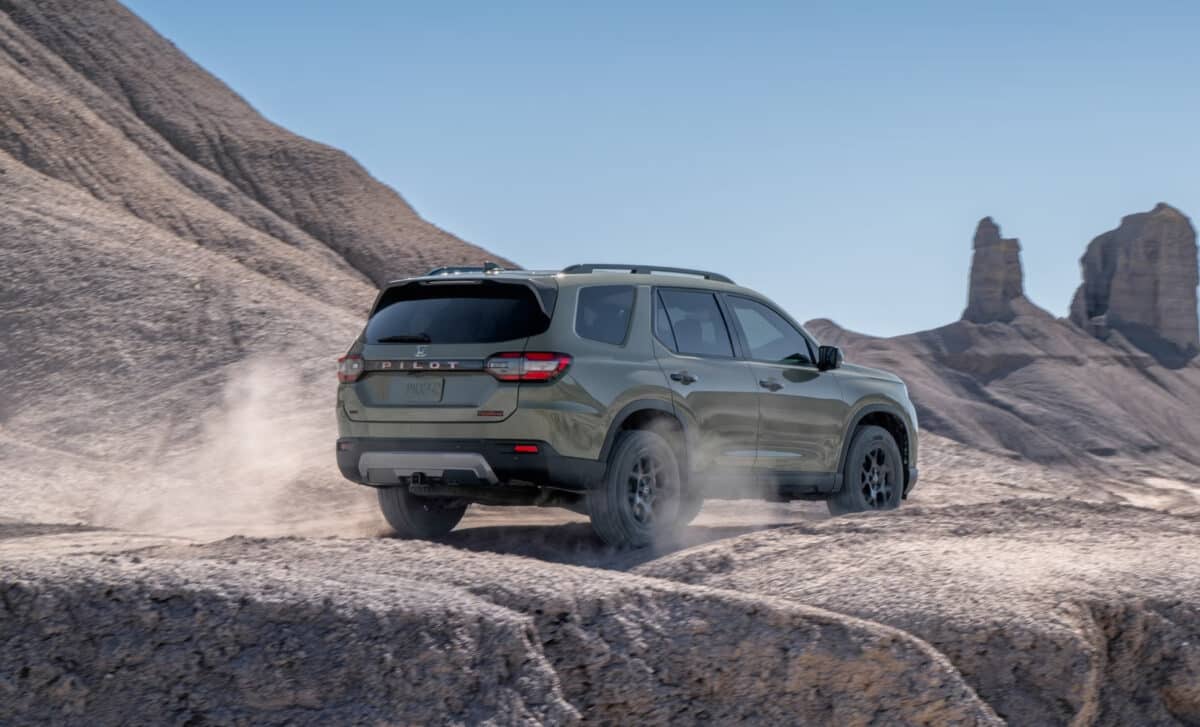
The Hybrid Omission: A Missed Opportunity
Despite all these upgrades, the 2026 Honda Pilot’s biggest flaw remains its powertrain. While the Pilot still boasts a 3.5-liter V6 engine producing 285 horsepower, the absence of a hybrid option is glaring. T
he Pilot sticks to its traditional gasoline engine and does not embrace electrification, even though many competitors in the midsize SUV market have already introduced hybrid variants. This decision feels increasingly out of touch, especially as the push for cleaner, more fuel-efficient vehicles continues to gain momentum.
Other brands have introduced hybrid or electrified powertrains that offer both power and improved fuel efficiency, leaving the Pilot trailing behind in terms of eco-friendliness. For buyers looking to make a more sustainable choice, this omission could be a dealbreaker. Honda’s hesitance to introduce a hybrid version of the Pilot may limit its appeal to environmentally conscious families, particularly when rivals like the Toyota Highlander Hybrid and Ford Explorer Hybrid offer competitive alternatives.



